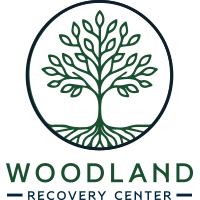Any drug use or addiction is dangerous, posing numerous and wide-ranging threats to both your physical and mental health. Opioids, including heroin and narcotic painkillers, are no different, and in many ways, these risks may be even greater. Heroin is an illegal, highly addictive drug that is derived from morphine. It can cause serious health problems, including overdose and death.
If you or someone you love is struggling with heroin addiction, it’s important to be aware of the signs and symptoms so you can get help as soon as possible. A heroin addiction treatment program can save your life.
Understanding the Signs of Heroin Use and Addiction
You might think that with a drug so severe, signs of use and addiction would be easy to spot. Though this is in many ways true, it’s important to remember that not everyone will show the same symptoms. Some signs may be mistaken for illness or mood disorders. Heroin use and addiction may manifest in a variety of ways—behaviorally, cognitively, and physically, among others.
Behavioral Changes
Heroin is a highly addictive drug, one which may quickly lead to changes in behavior. Some of the behavioral changes associated with heroin use and addiction include:
- Using heroin even when it’s not safe to do so
- Continuing to use heroin despite negative consequences
- Giving up important activities in favor of using heroin
- Lying or being secretive about heroin use
- Stealing money or valuables to get money for heroin
- Trouble speaking or slurring words
- Lack of coordination
- Intense lethargy or tiredness alternating between wakefulness
- Sleeping at erratic and unusual hours
- Decreased motivation
If you witness any of these behaviors, it may be a sign that someone you love is using or addicted to heroin.
Physical Signs of Heroin Use
When a person begins to use heroin on a regular basis, or compulsively within a heroin addiction, their body will likely begin to exhibit physical signs of heroin use, such as:
- Unexplained weight loss
- Dry mouth
- Excessively itchy skin
- Limbs feel unusually heavy
- Skin becomes flushed and warm
- Small (constricted) pupils
- Nose begins running
- Sweaty skin
- Constipation
- Bouts of nausea and/or vomiting
- Slowed breathing (respiratory depression)
- Decreased pain
- Small wounds in the interior of the nose
There are various ways that heroin can be administered, including the most common—snorting, smoking or injecting it. The latter route carries specific physical signs of use, including needle marks or “track marks” at various locations throughout the body—the crook of the arm, the forearm, the hand, foot, leg, groin region, or even between the toes. Repeated injections paired with contaminants within the heroin may cause scarring, skin lesions or infections, and even abscesses. In an attempt to hide these signs, a person may constantly wear long sleeves or pants, even in warm weather.
Drug Paraphernalia
Using heroin requires some form of equipment or paraphernalia. Often, a person will keep all of their supplies together in a case or bag, which they then stow out of sight. Common paraphernalia includes
- Straws
- Rolled dollar bills
- Cut off, hollow pens
- Razor blades
- Pipes
- Burnt pop cans
- Burnt aluminum foil
- Burnt spoons or bottle caps
- Rubber tubing or a belt
- Lighters
- Cotton balls
- Syringes
Get Help for Heroin Addiction at Woodland Recovery Center Mississippi
It can be hard to admit to yourself that you have a drug problem. It can be even more difficult to acknowledge someone close to you is struggling with heroin use. Take the first step on the road to recovery by contacting a Woodland Recovery Center Mississippi representative at 662.222.2989 today. We’ll help you find a comprehensive heroin addiction treatment program that will address your unique needs.



